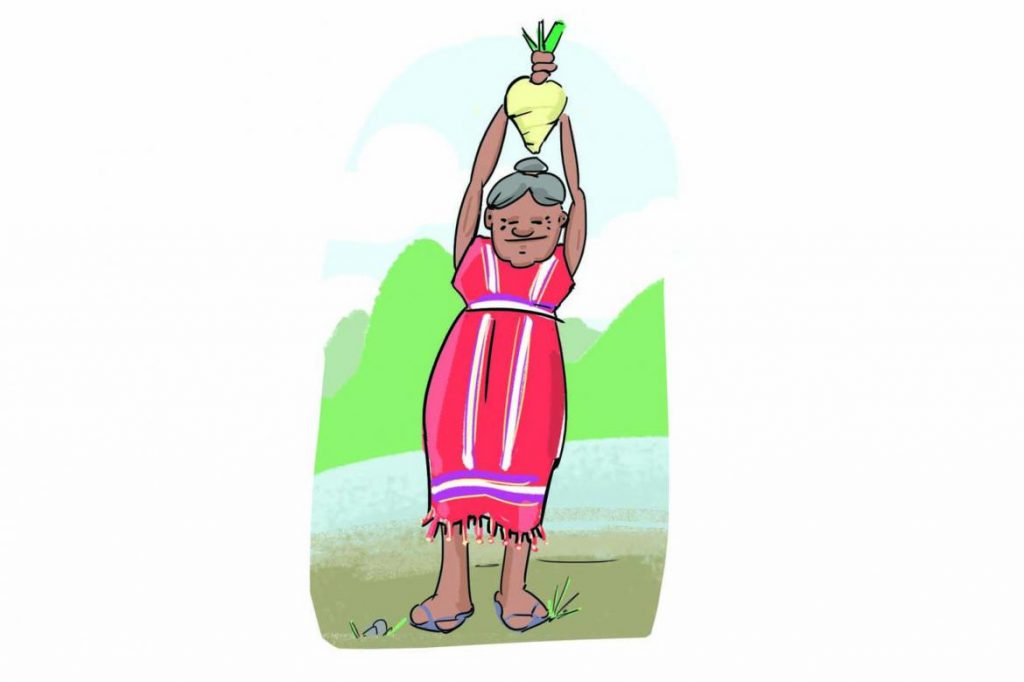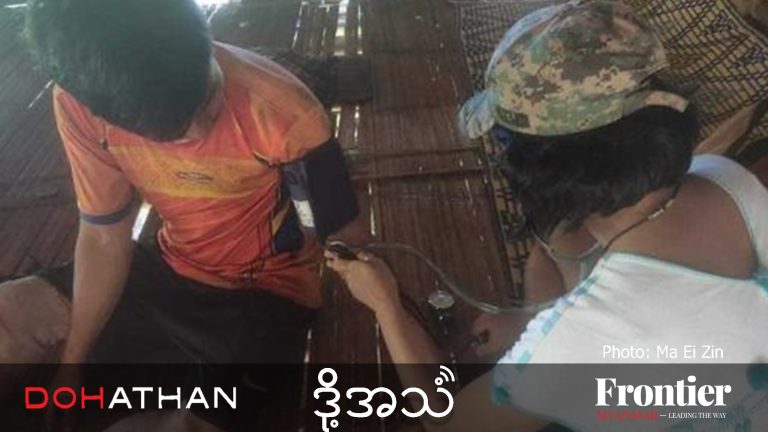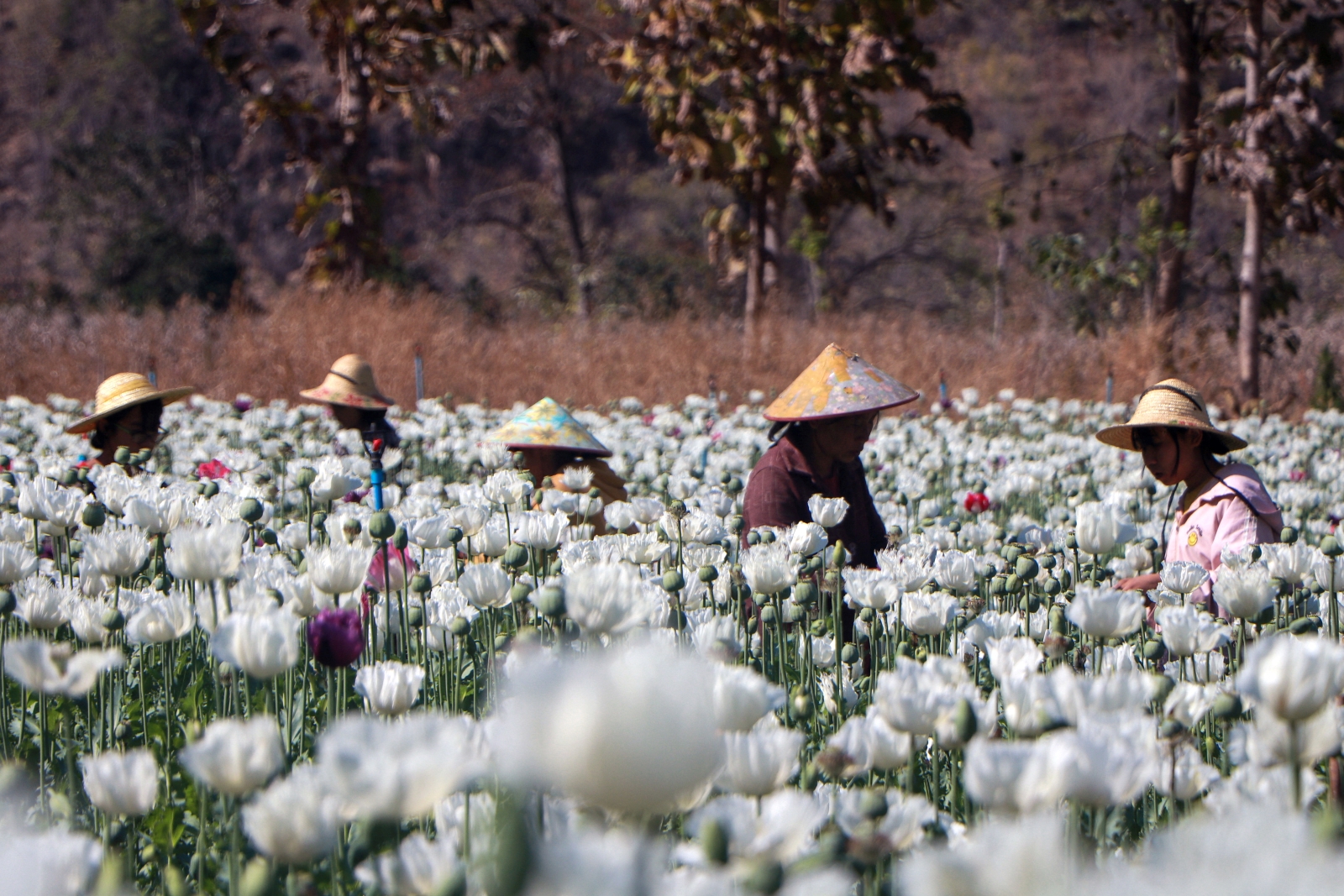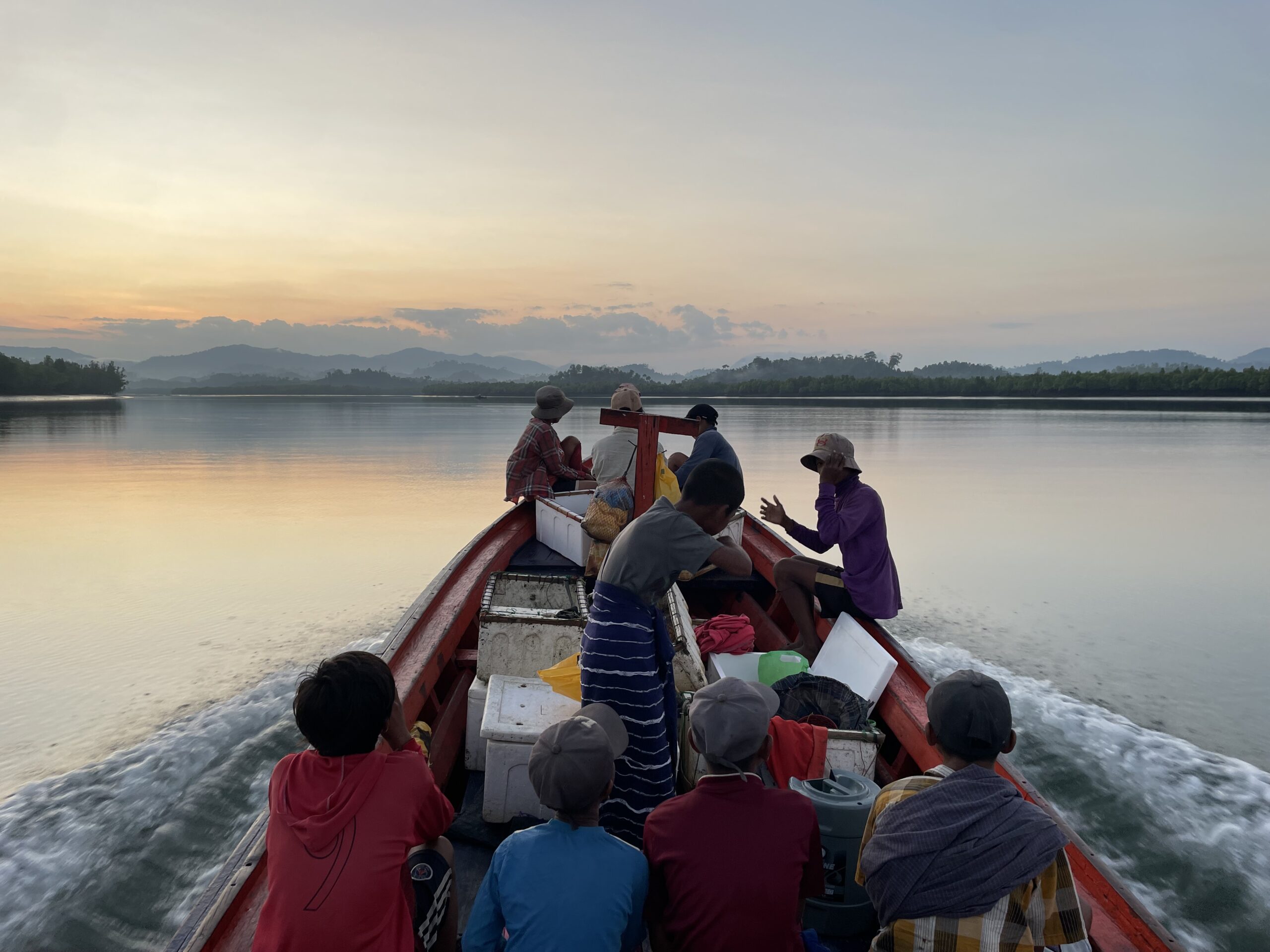In Tanintharyi Region, a Karen community has withstood war, displacement and a polluting coal mine, and remains proudly independent on its own ancestral land.
By BEN DUNANT | FRONTIER
ON A warm October afternoon in the village of Pyar Thar Chaung, which rises from a bend in the Ban Chaung River in the heavily forested mountains of Tanintharyi Region, an elderly Karen woman was extolling the virtues of a humble root vegetable.
“We respect kleeti,” she said, “because it saved our lives.”
While the woman gripped the microphone, a young man in a loose Karen tunic with red-and-white stripes held a kleeti aloft for several hundred villagers to see. It looked like a clump of giant potatoes covered in earth. The woman described how the vegetable, which grows on the forest floor, had seen her community through times of war and scarcity when she was a girl.
Behind her was a row of bamboo stalls heaving with vegetables, fruits and herbs. This produce was laid out for a taungya competition, in which Karen communities living along the Ban Chaung – which the Karen call the Paw Klo – in rural Dawei Township present what they have grown using the taungya method of rotational farming, the traditional livelihood of many upland communities in Myanmar.
Support more independent journalism like this. Sign up to be a Frontier member.
The competition, judged by elders peering gravely at the yams and plantains, was part of an event to mark World Food Day, October 16, by celebrating self-sufficiency and indigenous farming methods. In between the taungya and cooking competitions, and performances of Karen song and dance, speakers exhorted the audience to stick to locally produced, organic food and be proud of their way of life.
Despite the beauty and quiet of Pyar Thar Chaung – a loose settlement of wooden stilt houses scattered among groves of areca nut palms – the local way of life has undergone considerable disruption in recent decades. A middle-aged woman from a nearby village told me that, before the 2012 ceasefire between the Tatmadaw and the Karen National Union, villagers avoided their ancestral taungya fields because they feared being harassed by Tatmadaw soldiers. The practice had been cautiously revived since then, she said.
A young man told me how in 1997, as a three-year-old, he had fled with the rest of his village from a Tatmadaw offensive against the KNU. He had spent months with his family in the jungle, far up a mountainside, before it was safe for them to return. During that time, meals of kleeti had indeed kept them alive. This boyhood experience was an echo of previous waves of displacement in a war that has lasted seven decades.
Like much of mountainous Tanintharyi, the Ban Chaung area is today considered a zone of mixed control, where both the Myanmar government and the KNU claim the right to provide security, levy tax, issue land titles and undertake development. In most areas, they have worked out a fluid compromise on each of these prerogatives.
The World Food Day event at Pyar Thar Chaung was guarded by men in green berets and black uniforms, whose epaulettes bore KNU insignia. But elsewhere in the village, the Myanmar state had left its mark. A bumpy football pitch was fringed on one side by a typical government primary school; not far from this was a village-tract office under the General Administration Department, as well as offices for the National League for Democracy and the Union Solidarity and Development Party, sitting empty but ready for next year’s general election.
Under weak and ambiguous forms of governance, communities in Ban Chaung have also faced threats from natural resource exploitation. A Thai-operated, open-pit coal mine that began operations in 2012 has fouled the air and watercourses of Khon Chaung Gyi village, south of Pyar Thar Chaung. Responding to strong community resistance, the regional government sent a team that confirmed the allegations of environmental contamination and ordered a suspension of the 60-acre mine in early 2017. The KNU also withdrew support.
Amid these headwinds, the taungya competition at Pyar Thar Chaung was much more than a quaint vegetable contest. It was a symbol of the resilience of a community that had withstood a number of traumatic ruptures, and years of oppression, while remaining proud, independent masters of their ancestral land.







